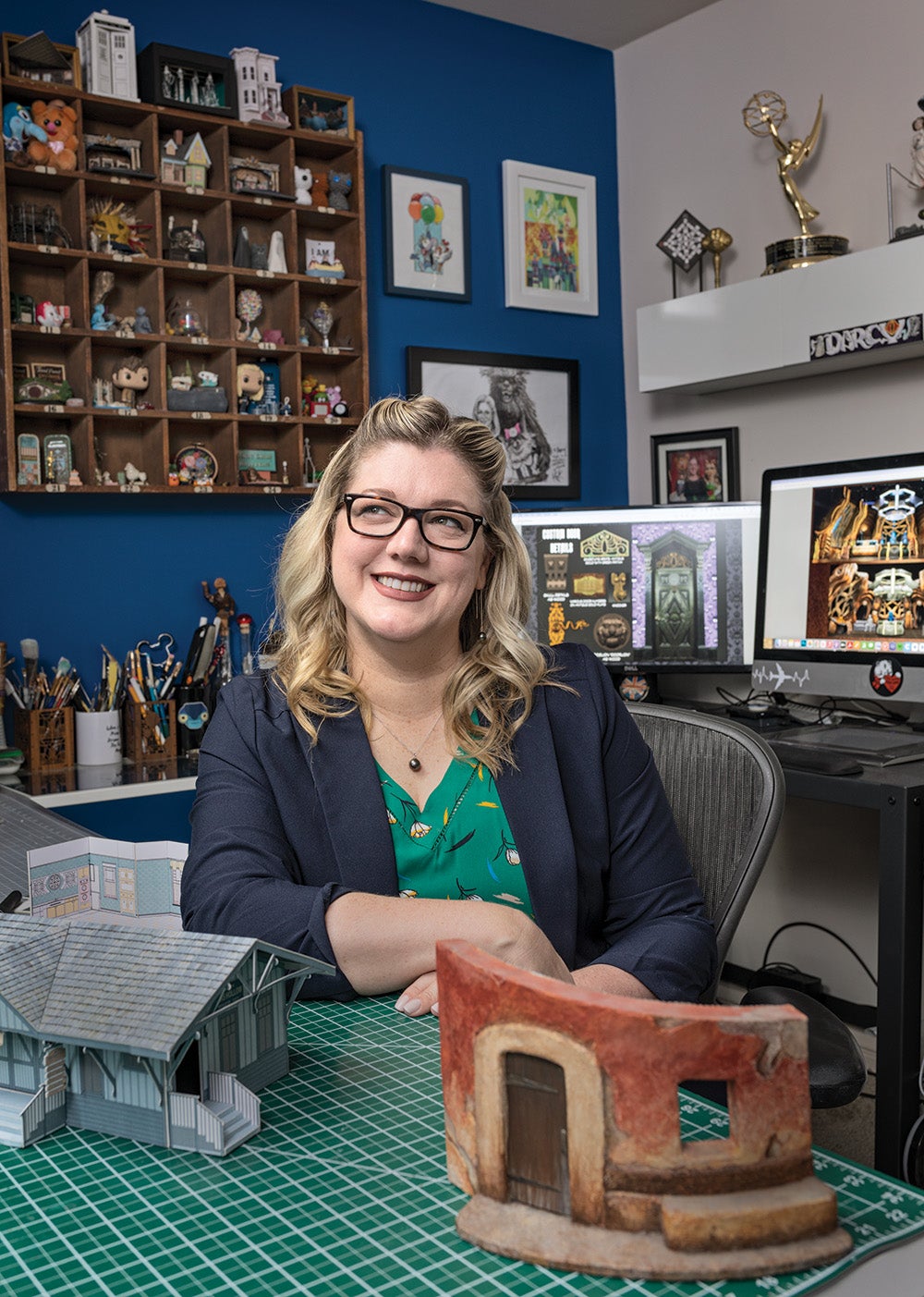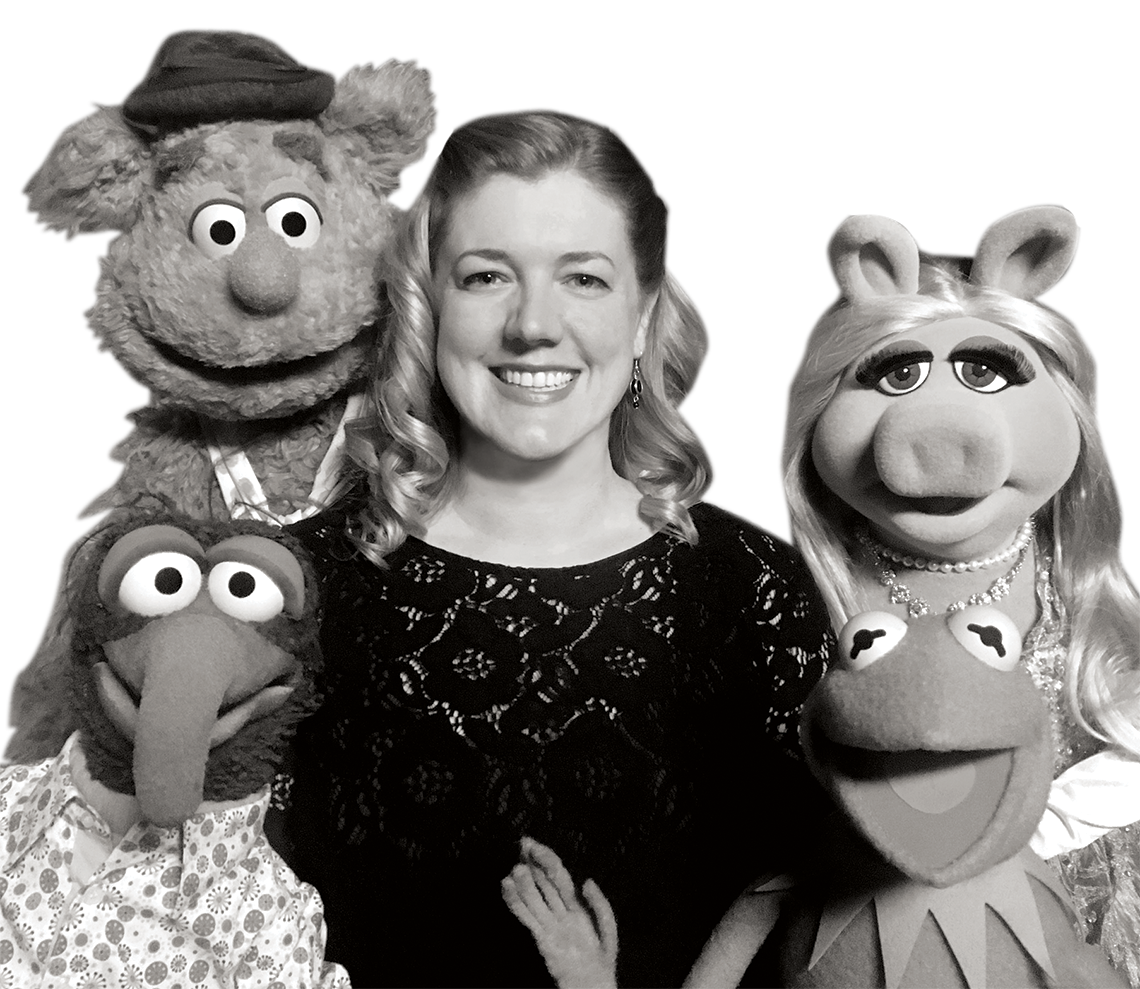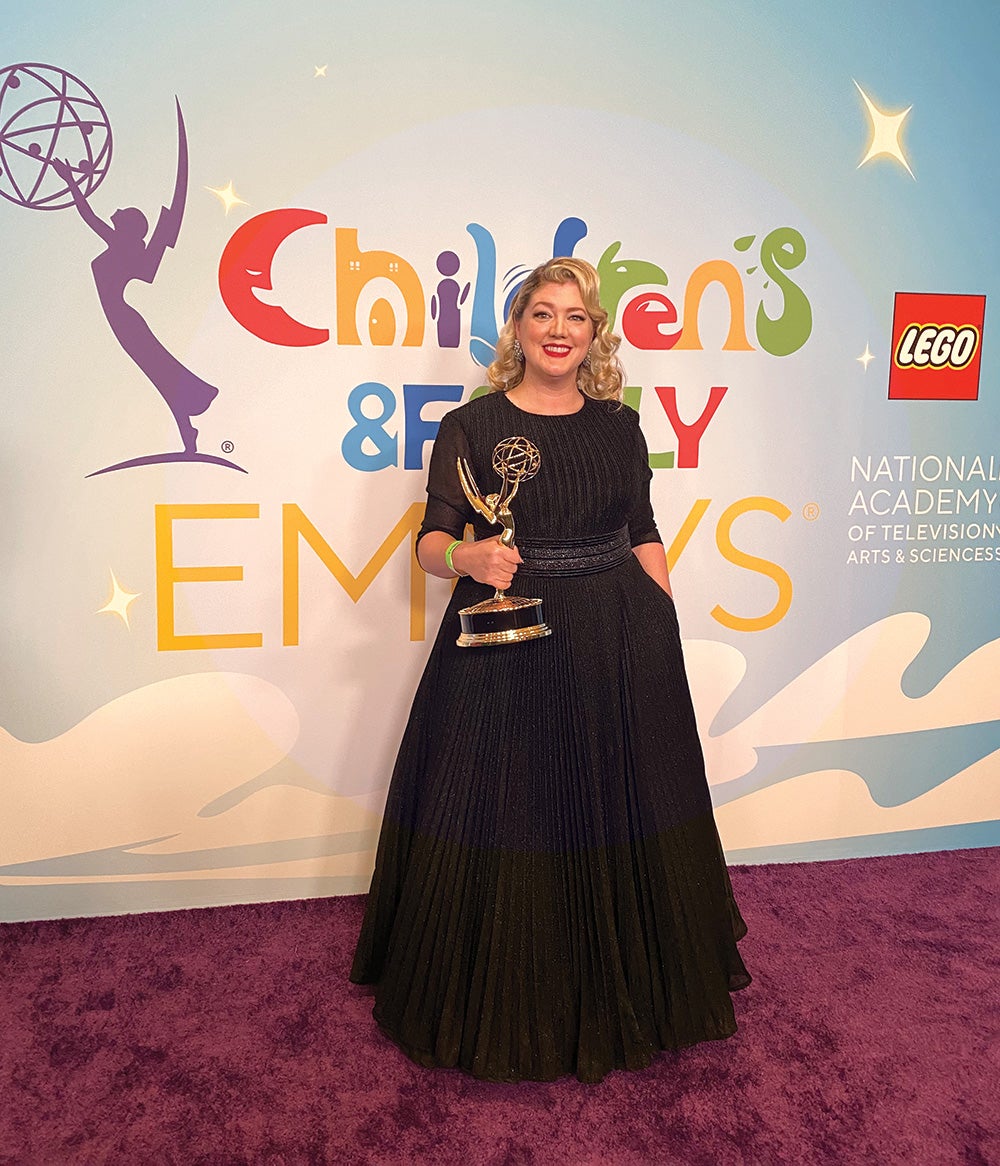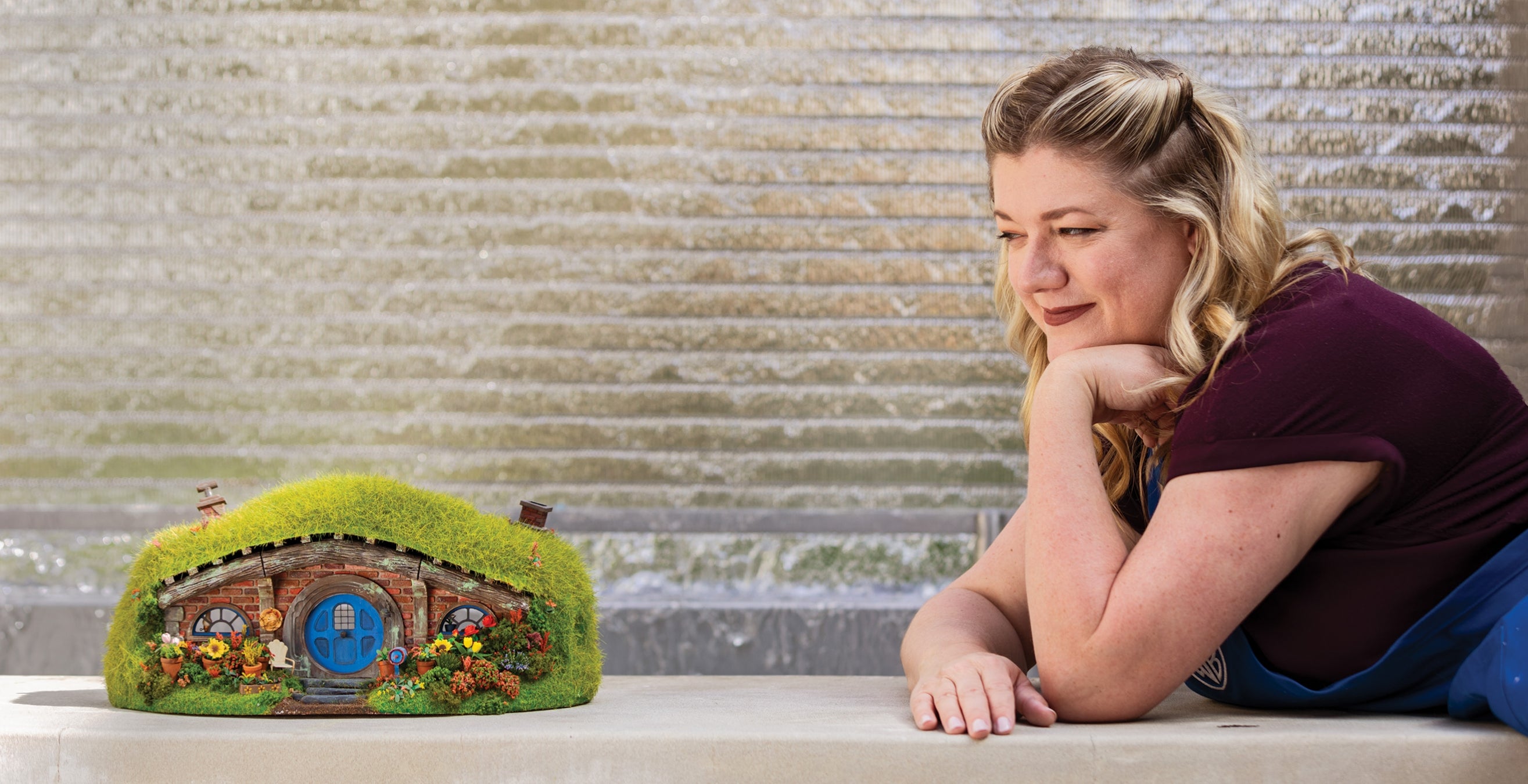In her fourth-grade classroom at West Side Traditional Academy in Pittsburgh, Mrs. Sadler arranges a plethora of donated cardboard boxes — big and small, rectangular and round — and tells her students to have at it.
Little Darcy Prevost eagerly grabs what she needs to build the character she’s imagining in her head — a peculiar figure with an oatmeal-container body and crayon-box legs. She paints it white and then covers it in sketches of aquatic creatures.
Mrs. Sadler winds her way through the classroom, quietly assessing her students’ work. In the sea of square and squat designs, Prevost’s creation is a jewel. She pulls the student-artist aside and muses: “I think we need to get you into an art class.”
Prevost’s parents agreed. So, every Saturday morning for five years, Prevost treks from her home in the Crafton Heights neighborhood to the Carnegie Museum of Art in Oakland and lets her imagination spill onto paper and canvas and clay. She’s talented — everyone says so — but for overachieving Prevost, art is a hobby, no more important than math, musicals, swim team or marching band.
That is, until her sophomore year at the University of Pittsburgh. There, the architecture major, yearning for a creative outlet and a way to curb the midcollege burnout, signs up for an introductory theatre arts class and meets the professor who will change her life. She learns that you can put art first and make a career of it — if you’ve got the drive and the stamina to make it happen.
Darcy Prevost does. In spades. And she’s about to spend the next two decades proving it to her peers, her professors and some of the biggest players in Hollywood, including Brian Henson, Steven Spielberg and — Wocka! Wocka! — the Muppets.
 In the film and theater industries, production and set designers are the world builders. It’s their job to design the scenery, props and decor that make you believe you’re in another room or another country, another era or another universe.
In the film and theater industries, production and set designers are the world builders. It’s their job to design the scenery, props and decor that make you believe you’re in another room or another country, another era or another universe.
Inside the Charity Randall Theatre in the winter of 2005, the Pitt Repertory Theatre handed its design team the ambitious task of transporting the audience to 11th-century Japan for a production of the samurai revenge tale “Rashomon.” Knowing Prevost was studying architecture, senior lecturer and set design head Julie Allardice Ray asked her to draft the intricate brackets that would hold together the set’s largest piece — a looming Buddhist temple. Prevost set pencil to paper.
“And I drew it way too big,” she says, laughing. “I didn’t understand scale. But Julie just let me do it.”
A few days later, when Prevost returned to the theater’s scene shop, there it was — a fully formed, three-dimensional reproduction of her drawing. She was awed. She didn’t get this instant gratification from architecture, where years could pass between blueprint and construction, and you had to worry about things like HVAC.
“That was the lightbulb moment for me,” she says. “Someone built the thing I drew. That’s an addictive feeling.”
It was also a feeling Ray knew well. Her career as a production designer, set decorator and art director spans half a century and includes television (“The X Files” and “Babylon 5”), film (“Love & Other Drugs”) and theater (“Mamma Mia!” and “Cabaret”). She was proof this career path Prevost had just fallen onto — and fallen in love with — was possible. And, for a talent like Prevost, within reach.
The only problem? Prevost was coming to this realization a few semesters too late. Despite earning enough credits to graduate as an architectural studies and theatre arts double major, she hadn’t taken enough design classes to jump headfirst into a career. After graduating in May of 2005, at Ray’s suggestion, Prevost took an internship as a scenic painter with the Denver Center for the Performing Arts Theatre Company. It was arduous work, hauling 5-gallon buckets up towering ladders day after day, but she got an up-close view of the industry as a parade of visiting set designers rolled into town to work on a season’s worth of productions.
While in Denver, Prevost also applied to graduate schools. Her top choices were Carnegie Mellon University, where her mom wanted her to go, and the University of California, Irvine, where Ray had earned her degree. In the end, and not surprisingly given her artist’s eye, it came down to the visuals.
“The campus of UC Irvine was unlike anything I’d ever seen before — there were palm trees in the parking lot!” Prevost says. “It was different and beautiful. And I felt like, ‘if I don’t leave Pittsburgh now, I’ll never leave.’”
Prevost earned her master’s in scenic design just as the financial crisis of 2008 hit. Even in so-called recession-proof Hollywood, hiring rates plummeted 16% that year. No one was looking for a just-out-of-school set designer, particularly one without a union card. But, with support from her parents, Prevost made a go of it in California, designing sets at small local theaters for far less money than she was worth.
“It was like $500 for seven weeks of work,” she says. “So, I’m trying to do four shows at a time just to cover my bills while driving all over Southern California.”
Eventually, a fellow UC Irvine grad got her hired as a production assistant on a small television crew. From there, Prevost “fought and clawed” her way into the industry, taking every job she could get. It wasn’t always pretty or glamorous or even in the set design realm. Among her gigs: handing sports reporter Erin Andrews her fork in between takes on a short-lived TLC cooking show and shoveling cow manure in the desert for a History Channel show called “Top Shot.”
It wasn’t until the art director on filmmaker Kevin Smith’s little-known comedy/horror flick “Yoga Hosers” helped get Prevost into the exclusive Art Directors Guild in 2014 that her career truly took off. Union membership opens a world of higher-paying jobs with more prestigious studios. Within just a few years, Prevost’s set design resume ballooned to include “Gilmore Girls: A Year in the Life,” “American Crime” and the Pittsburgh-based “Mindhunter.”
Meanwhile, she was also becoming an in-demand production designer, mostly on shows whose stars were of the stuffed variety. As a child of the ’80s, Prevost had long been a fan of puppetry, particularly “The Muppet Show” and all its kooky, quirky spinoffs, so she was happy to have a hand in designing the new era of the genre.
 While set designers are akin to architects, creating physical space like walls, floors and built-in furniture, production designers take a wider view, conceiving the overall look and feel of a project. Prevost showed off her vibrant, fantastical style on the unconventional Netflix cooking show “The Curious Creations of Christine McConnell,” the Disney+ alien-hosted talk show “Earth to Ned” and the Michelle Obama-approved foodie puppet show “Waffles + Mochi’s Restaurant.”
While set designers are akin to architects, creating physical space like walls, floors and built-in furniture, production designers take a wider view, conceiving the overall look and feel of a project. Prevost showed off her vibrant, fantastical style on the unconventional Netflix cooking show “The Curious Creations of Christine McConnell,” the Disney+ alien-hosted talk show “Earth to Ned” and the Michelle Obama-approved foodie puppet show “Waffles + Mochi’s Restaurant.”
And then she got it — the dream job offer that would earn her one of Hollywood’s biggest accolades.
When the email popped into Prevost’s inbox, she immediately took notice.
It wasn’t just that the email came from director Kirk Thatcher; it was the seemingly preposterous words those letters spelled out: “Muppet Halloween project, are you available?”
Prevost punched at her computer keys in excitement: “Yes, and if not, I’ll be available.”
The details were scanty at first. Thatcher, who Prevost had previously worked with on the “Christine McConnell” set, described it as a buddy film starring Gonzo and Pepe (the bug-eyed king prawn), who must spend the night in a haunted house. Prevost loved it. Something small, quirky and niche to whet the palate of Muppets fans. But when the script for “Muppets Haunted Mansion” arrived, she quickly understood the film had much bigger ambitions.
“By page two, I realized this isn’t just a buddy film,” Prevost says. “Every Muppet is in here. Muppets people haven’t seen in a decade are in here. And it’s not just a haunted house, it’s The Haunted Mansion!”
As a Disney superfan and a longtime season passholder, Prevost understood the stakes. The Haunted Mansion was a 1950s-era Walt Disney pet project that took more than a decade to come to fruition. The original attraction in Disneyland eventually spawned two more rides (in Orlando and Tokyo), a movie starring Eddie Murphy, a video game and a Lego set. Because the mansion is such a beloved piece of Disney lore, projects featuring it are notoriously difficult to greenlight, Prevost says.
She didn’t have the inclination or the time — a miniscule two months — to redesign and rebuild the mansion, so instead, as she got to work designing the rooms, decor and props in the mostly digital set, she imbued it with the cleverest of Easter eggs. Or, as she likes to say, “I Muppified it.”
Usually when you get to work with the Muppets, that is the reward.
Darcy Prevost
The mansion’s iconic purple wallpaper got a puppet-themed upgrade, featuring Gonzo; the intricate sconces are actually the bearded vocalist Mahna Mahna holding his background singers — the pink, fuzzy Snowths — aloft like candles; and the front gates have Kermit eyes. Though camera angles make it difficult to see, Rizzo the Rat makes an appearance on the fireplace grate and — creepiest of all — an outline of ogre Sweetums’ furry face glowers down at all who enter from the front door’s pediment.
“I was legitimately terrified of Sweetums when I was a kid,” Prevost says. “During filming, there was a real fear that I was going to turn the corner and Sweetums would jump out at me.”
Fortunately for Prevost, that particular nightmare didn’t come true. But there were days that felt especially agonizing, like filming the Madame Pigota — that’s Miss Piggy’s disembodied head floating in a crystal ball — scene at 2 a.m. on a Friday.
Still, even the most frustrating days and latest nights come with an adrenaline rush you can only get from a set in motion. And Prevost lives for it.
“When you watch TV and films, you may see a quiet, beautiful moment between two people, but there are 300 people on the other side of that camera doing makeup touch-ups or running around painting something at the last minute. I’m addicted to the stress and energy of that. I just think it’s intoxicating. It’s magic.”
Breaking into the film industry is a nonlinear and mysterious venture, even more so for those living, working or attending school far from Hollywood: like, say, in Pittsburgh.
 But when Pitt theatre arts students have questions, the department’s theatrical production director, Ashley Martin, knows just who to call.
But when Pitt theatre arts students have questions, the department’s theatrical production director, Ashley Martin, knows just who to call.
Martin and Prevost were classmates at Pitt in the early aughts. While Prevost headed west to focus on film, Martin remained on the East Coast working in live theater, casting and education. With a resume full of stage manager roles and as a member of the Actors and Stage Managers’ Equity Union, Martin has plenty of experience and advice to share with students.
Sometimes, though, students just want to hear from the woman in Hollywood.
Although Prevost finds it amusing and mystifying that she’s suddenly graduated from try-hard to mentor status, she always answers the call. Talk to a student who can’t decide between theater and film? Sure. Review a portfolio? No problem.
“Darcy is somebody who is actually making a living doing this, somebody who has succeeded at this, and she’s really gone above and beyond for our students anytime we’ve asked,” Martin says.
Prevost’s advice is direct: Yes, you must be talented to make it in the entertainment industry, but more important than talent is “stubborn determination,” a willingness to stick it out when the hours are long, the pay is low and the work is difficult, because it will be.
But at the other end of that oftentimes very long tunnel are thrills that few get to experience. Prevost got the biggest one of her career in December 2022 at the inaugural Children’s and Family Emmys when she and her team took home the award for Outstanding Art Direction/Set Decoration/Scenic Design. Not only did they win, but they also beat out fellow Disney+ darlings “Sneakerella” and “The Mysterious Benedict Society,” which received 11 nominations each.
It was so unexpected — the Muppets design team got a trio of not-so-promising seats under the balcony, in the center of Row S — that Prevost half-ran, half-skipped down the aisle to accept the award in her beaded black dress.
“Usually when you get to work with the Muppets, that is the reward,” a quivering Prevost told the audience of industry peers as she clutched her statue. “I know everyone in here, we’ve all been on this wild ride with the ups and downs. But tonight, it feels pretty worth it.
This story was published on May 5, 2023. It is part of Pitt Magazine's Spring 2023 issue.

